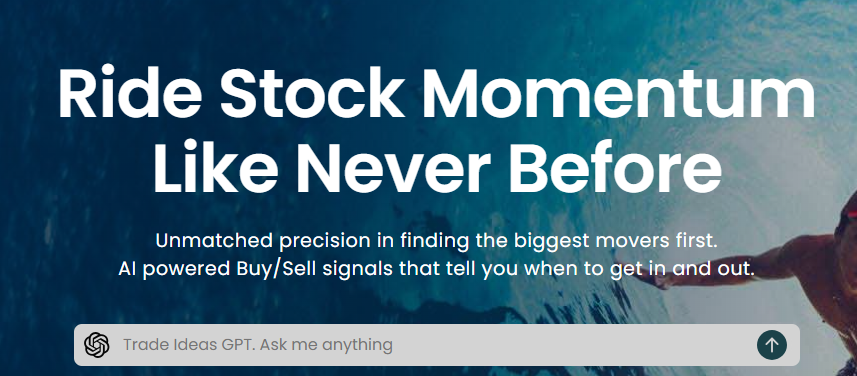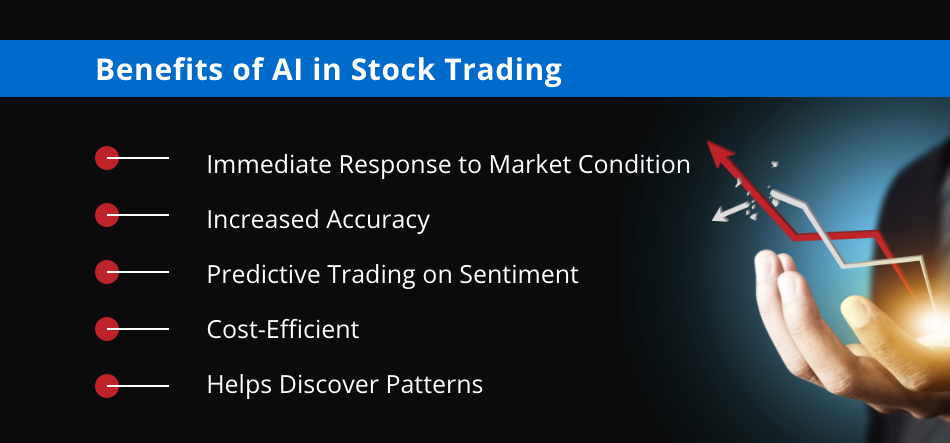20 Pro Advice For Deciding On AI Stock Trading Analysis Sites
20 Pro Advice For Deciding On AI Stock Trading Analysis Sites
Blog Article
Top 10 Tips To Evaluate The Accuracy Of Ai Software For Predicting And Analysing Stocks
To ensure that the platform you choose can provide reliable insights and forecasts, you must be able to evaluate its performance and accuracy. These are the top 10 ways to test these platforms.
1. Backtesting Results
What to Look For: Check if the platform offers backtesting features to see the way its predictions have performed on historical data.
Why it is Important : Backtesting can be used to validate an AI model by comparing its predictions to historical results.
Find platforms that provide the possibility of setting up backtesting parameters.
2. Real-time Performance Tracking
What to watch for: See the response of the platform in market conditions that are in real time.
Why It's Important Real-time performance is an excellent indicator of the performance of a platform than only historical backtesting.
Tips: You can make use of a demo account or a trial version of the software to keep track of live movements in real time and then compare it with your forecasts.
3. Prediction Error Metrics
What to look for: Evaluate metrics like Mean Absolute Error (MAE) or Root Mean Squared Error (RMSE), or R-squared to quantify prediction accuracy.
Why It's Important: These metrics give a quantitative measurement of the degree to which predictions correspond to the actual results.
Platforms that share metrics openly are typically more transparent.
4. Win Rate and Success ratio
What to look for Look for the platform's win rate (percentage of correct predictions) and the success ratio (profitability of trades that are based on predictions).
Why It Matters Why It Matters: A high success rate and win rate indicate a greater accuracy in predicting the future, and thus a higher chance of profit.
Beware of sites that claim to have a high success rate (e.g. 90 %+),) as no system can guarantee 100% success.
5. Benchmarking against market Indicators
What to look for What to Look For: Compare the platform's forecasts and performance with the major market indexes (e.g., S&P 500, NASDAQ).
Why it is Important It can be used to determine if a platform over or underperforming the overall market.
Find consistency in performance, not just gains in a short period of time.
6. Consistency in Market Conditions
What to look for: Determine how the platform performs in different market conditions (bull or bear markets or high volatility).
What is the significance of it A solid platform can perform effectively in all markets, not just those that have favorable conditions.
Tip: Test the platform's predictions during periods of volatility or market fluctuations.
7. Transparency in Methodology
What to look out for How to recognize AI models and algorithms (e.g. reinforcement learning and neural networks, reinforcement learning, etc.).
What's important Transparency lets you evaluate the scientific and technical rigor of a platform.
Tip: Avoid platforms that use "black box" models without explaining the process by which predictions are made.
8. Users Review and Independent Testing
What to look for Review reviews from other users and check for independent testing.
Why it is important The independent reviews and tests provide unbiased insights on the platform's accuracy and performance.
Tips: Search for reviews on forums like Reddit, copyright or financial blogs.
9. Risk-Adjusted Returns
What to look out for: Use risk-adjusted metrics, such as the Sharpe Ratio (or Sortino Ratio), to assess the platform's performance.
What is important: These measures take into consideration the amount of risk required to achieve returns. This gives a complete analysis of performance.
Sharpe Ratio is an excellent indicator of risk-adjusted returns.
10. Long-term track records
What to Watch Out For: Examine the performance of the platform over a longer time (e.g. for 3-5 years).
The reason it's important The long-term performance is a better indicator of reliability than short-term performance.
Do not use platforms that have only short term success or results that are cherry-picked.
Bonus Tip: Test using a Demo Account
Use a demo account or free trial to test the platform's predictions in real-time, without risking any real money. This will allow you to test the accuracy and effectiveness.
By following these tips you can test the accuracy as well as performance of AI platforms to analyze stocks and make predictions. Select one that aligns with your trading needs and your risk tolerance. Be aware that no platform can be guaranteed to be 100% accurate, so combining AI insights along with your own research is usually the best option. View the most popular market ai hints for site examples including ai investment platform, ai for stock trading, chart ai trading assistant, ai for stock predictions, ai investing app, chart ai trading assistant, ai investing app, ai investing platform, trading ai, best ai for trading and more.
Top 10 Tips On Assessing The Regulatory Conformity Of Ai Stock Predicting Trading Platforms
The regulatory compliance of trading platforms using AI to forecast or analyze stock prices is an important factor. Compliance ensures that the platform adheres to financial regulations and is operating within legal frameworks, and protecting user information. This minimizes the chance of financial penalties or legal issues. Here are top 10 tips for evaluating the conformity of these platforms.
1. Verify that you have a valid license and registered
Regulators: Check that the platform is certified and registered with relevant financial regulatory authorities (e.g. SEC in U.S.A., FCA UK, ASIC Australia).
Verify that brokers who are integrated into the platform are licensed and licensed and.
Public records: Visit the site of the regulator to find out whether the platform is registered or if it has any time violated the law.
2. Assessment of Data Privacy Compliance
GDPR: When operating in the EU or providing services to customers in the EU the platform must comply with the General Data Protection Regulation.
CCPA : California Consumer Privacy Act (CCPA) conformity should be checked by the users.
Data handling policies: Review the privacy policies of the platform to ensure it outlines the ways in which user data is gathered, stored, and shared.
3. Examining Anti-Money-Laundering/AML measures
AML policies: Make sure that your platform is armed with robust AML policy that can detect and stop any laundering of money.
KYC Procedures: Verify whether there are procedures on the platform to confirm users' identities.
Transaction monitoring: Check if the platform monitors transactions for suspicious activity, and then reports it to the appropriate authorities.
4. Verify that you are in compliance with Trading Regulations
Market manipulation: Make sure that the platform has measures to prevent market manipulation, such as washing trading, spoofing.
Types of orders. Check that the platform is in compliance with all regulations regarding order type (e.g. there is no stop loss hunting that is illegal).
Best execution: Check to see if the platform adheres best execution practice to ensure that trades will be executed at the lowest possible price.
5. Assessment of Cybersecurity's compliance
Data encryption: Make sure the platform uses encryption to protect user data in transit and at rest.
Response to incidents. Verify whether the platform is equipped with a plan of action to handle cybersecurity breaches and data breaches.
Certifications: Determine if a platform has been accredited for cybersecurity (e.g. ISO 27001, SOC 2)
6. Examine Transparency and Transparency
Fee disclosure. Be sure that all fees and charges are clearly disclosed, including any hidden charges or fees.
Risk disclosure: Make sure that the platform provides clear risk disclosures, specifically for leveraged or high-risk trading strategies.
Performance reporting - Examine for accurate and transparent performance reports that are provided by the platform for its AI models.
7. Check for the compliance of international regulations
Transparency in trading across borders: If you are trading internationally, ensure that the platform is compliant with all applicable regulations.
Tax reporting: Check if a platform has tools or reports to allow users to follow tax regulations.
Conformity with sanctions: Ensure that the platform adheres and is not allowing dealings or transactions with countries or entities that are banned.
8. Reviewing Audit trail trails and Record-Keeping
Transaction records: To meet regulatory and auditing reasons, ensure that the platform has complete records of all transactions.
User activity logs - Make sure that the platform logs all user activity including transactions made as well as any changes made to your account settings.
Check for audit readiness: Determine whether your system can produce the required documentation and logs in the case of an inspection from a regulatory authority.
9. Make sure you are in compliance with AI-specific Regulations
Algorithmic Trading Rules If your platform allows algorithmic trades, make sure it adheres to rules such as MiFID II (in Europe) or Reg SCI (in the U.S.).
Fairness and impartiality: Check the accuracy of the platform's AI models are monitored and tempered to ensure that they are not biased.
Explainability: As stipulated by certain regulations, the platform should be able to provide clear explanations for AI-driven decisions and forecasts.
Review the User's Feedback and Regulatory Histories
User reviews: Conduct user research to assess the reputation of the platform in terms of the regulatory conformity.
Examine the regulatory history to determine if there have been any fines or penalties for infractions of rules.
Third-party audits: Verify that the platform has regular audits by third parties to ensure compliance with the regulations.
Bonus Tips
Legal consultation: Think about consulting a legal expert to review the platform's compliance with pertinent rules.
Trial period: Make use of a demo free or trial period to evaluate the features of the platform that are compliant.
Customer support: Ensure the platform offers support for compliance-related questions or concerns.
Utilizing these suggestions, it is possible to identify the level of compliance with the law between AI stock trading platforms. This will enable you to select a platform that is operating within the legal framework that safeguards your interests. Compliance not only reduces legal risks, but also increases confidence and trust in the platform's services. Have a look at the top stock trading ai blog for website tips including ai tools for trading, investing with ai, stock predictor, how to use ai for stock trading, ai in stock market, stocks ai, ai copyright signals, investing with ai, how to use ai for stock trading, free ai stock picker and more.